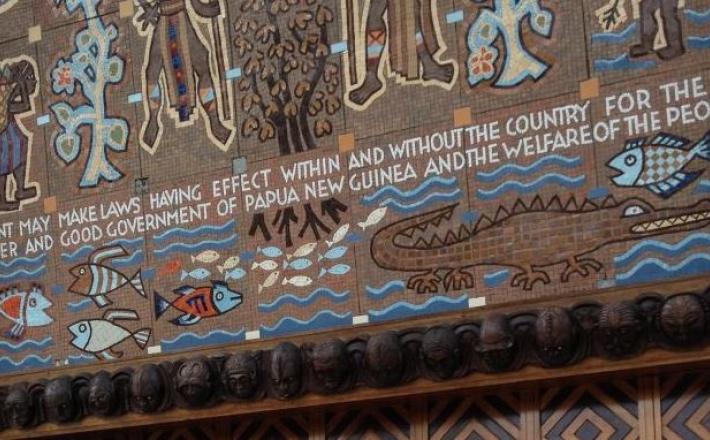Moving beyond now in women’s political representation in Papua New Guinea
Source: Devpolicy
On 6 March 2018, PNG’s Prime Minister Peter O’Neill reportedly announced a shift from limited preferential voting (LPV) back to the first past the post voting (FPTP) system in PNG’s national elections. This announcement will likely spark intense debates about the pros and cons of each voting system. It also raises questions about women’s political representation in PNG. For decades, debates about women’s political representation have waxed and waned depending on who is in parliament, who constitutes the women’s lobbying group, the state of the national women’s machinery, funding availability and – because most funding is from donors – the priorities and direction that donors choose.
Early debates revolved around a proposal to invoke a provision in the PNG Constitution to nominate a woman’s representative. This debate culminated in 2009 when the Somare-led government backed Dame Carol Kidu, who was then a member of the cabinet, to put a motion to parliament for women to be nominated as representatives of parliament, based on this constitutional provision.
The parliament rejected the proposal, but it was an important moment because it deepened the debate about legislative reform and paved the way for progressing the drafting of the Equality and Participation Bill (also referred to as the Women’s Bill). After many months of sustained national debate, consultations, lobbying and drafting, women scored another victory on 22 November 2011 when the parliament voted to allow the 22 reserved seats for women under this bill. Leading up to the 2012 national elections, the leaders’ summit agreed to support reserved seats for women in parliament.
Click here to read the full article published by DevPolicy on 5 April 2018.

On 6 March 2018, PNG’s Prime Minister Peter O’Neill reportedly announced a shift from limited preferential voting (LPV) back to the first past the post voting (FPTP) system in PNG’s national elections. This announcement will likely spark intense debates about the pros and cons of each voting system. It also raises questions about women’s political representation in PNG. For decades, debates about women’s political representation have waxed and waned depending on who is in parliament, who constitutes the women’s lobbying group, the state of the national women’s machinery, funding availability and – because most funding is from donors – the priorities and direction that donors choose.
Early debates revolved around a proposal to invoke a provision in the PNG Constitution to nominate a woman’s representative. This debate culminated in 2009 when the Somare-led government backed Dame Carol Kidu, who was then a member of the cabinet, to put a motion to parliament for women to be nominated as representatives of parliament, based on this constitutional provision.
The parliament rejected the proposal, but it was an important moment because it deepened the debate about legislative reform and paved the way for progressing the drafting of the Equality and Participation Bill (also referred to as the Women’s Bill). After many months of sustained national debate, consultations, lobbying and drafting, women scored another victory on 22 November 2011 when the parliament voted to allow the 22 reserved seats for women under this bill. Leading up to the 2012 national elections, the leaders’ summit agreed to support reserved seats for women in parliament.
Click here to read the full article published by DevPolicy on 5 April 2018.